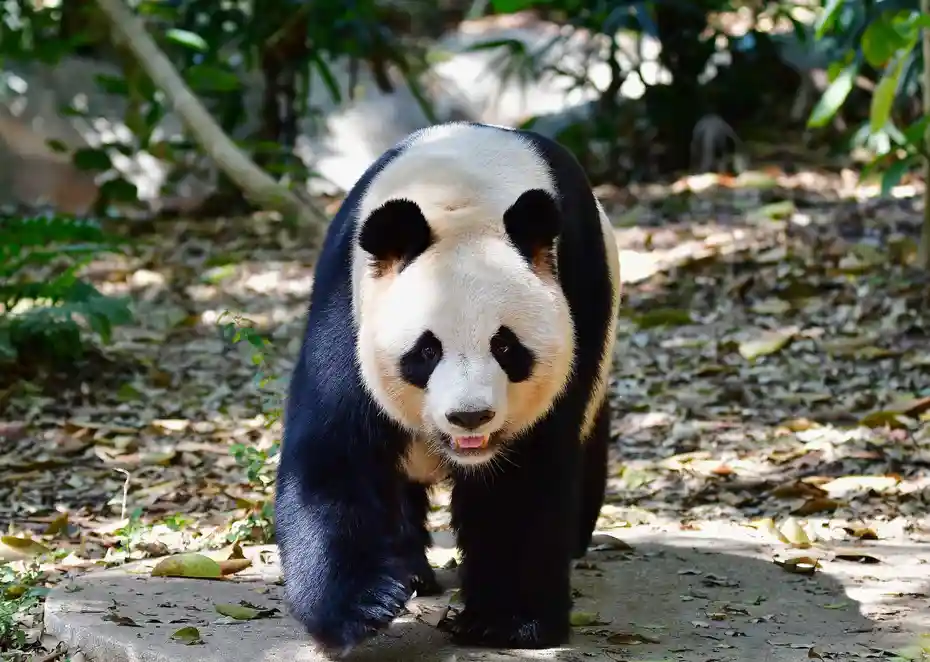Introduction: Discover the Wild Side of Southern China
Shenzhen Safari Park is one of China’s most popular wildlife destinations. Located in the bustling city of Shenzhen, it offers a unique escape into nature. Families, tourists, and animal lovers visit year-round to experience close encounters with exotic animals.
This guide covers everything you need to know before visiting. From top attractions to practical tips, we’ll help you plan a smooth and memorable trip. Whether you’re a local or an international traveler, this park has something special for everyone.
The park spans over 1.2 million square meters. It combines conservation, education, and entertainment in one immersive environment. With over 300 species and thousands of animals, it’s a must-see attraction in Guangdong Province.
In this article, you’ll learn about the best exhibits, how to save time and money, and what to avoid. We’ll also share insider tips to enhance your experience. Let’s dive into the wild world of Shenzhen Safari Park.
What Makes Shenzhen Safari Park Unique?
Unlike traditional zoos, Shenzhen Safari Park uses a free-range concept. Animals roam in large, naturalistic enclosures. Visitors observe them from elevated pathways or safari vehicles.
This design reduces stress for animals and improves guest experience. You’ll see lions, tigers, and elephants living in spacious habitats. The park avoids cages, focusing instead on open landscapes.
Another standout feature is the park’s breeding programs. It plays a key role in protecting endangered species like the South China tiger. Educational signage helps visitors understand conservation efforts.
The park also integrates technology. Interactive displays and mobile apps offer real-time information. Audio guides are available in multiple languages, including English.
This blend of innovation, animal welfare, and education sets Shenzhen Safari Park apart. It’s not just a tourist spot—it’s a model for modern wildlife parks in Asia.
Top Animal Exhibits to See
The park is home to dozens of exhibits. Some are must-see stops for every visitor. Here are the most popular ones:
1. Tiger Valley
This area lets you see white and Siberian tigers up close. A glass tunnel runs beneath their habitat. You can watch them swim and play just feet away.
Tiger Valley also hosts feeding demonstrations. These shows educate guests about predator behavior and diet. It’s both thrilling and informative.
2. Panda House
Giant pandas are a major draw. The climate-controlled enclosure mimics their natural mountain habitat. You’ll often see them eating bamboo or lounging in trees.
Keep an eye out for cubs during breeding season. The park has successfully bred pandas in captivity—a rare achievement.
3. African Savannah Zone
This open area houses giraffes, zebras, and antelopes. You can take a guided safari bus tour through the zone. It feels like a mini-safari in the heart of Shenzhen.
Staff provide commentary on animal behavior and African ecosystems. Binoculars are recommended for better viewing.
4. Bird Paradise
Over 50 bird species live here, including peacocks and hornbills. The highlight is the daily bird show, where trained birds perform flying routines.
The aviary is designed to encourage natural flight patterns. It’s a peaceful spot, perfect for photography.
How to Get to Shenzhen Safari Park
The park is located in Xili, Nanshan District. It’s easily accessible by public transit or car.
By metro, take Line 5 to Xili Station. From there, a shuttle bus runs every 20 minutes to the entrance. The ride takes about 10 minutes.
If driving, use GPS to navigate to the official address: 498 Nanhuan Road, Nanshan. Parking is available on-site for a small fee.
For tourists staying in Futian or Luohu, taxis cost around 80–120 RMB one way. Ride-hailing apps like DiDi work well in Shenzhen.
Pro tip: Arrive early. The park opens at 9:00 AM, and traffic builds quickly by 10:30 AM.
Best Times to Visit for a Smooth Experience
Timing your visit can make a big difference. Weekdays are less crowded than weekends. School holidays and Chinese public holidays should be avoided if possible.
Spring (March to May) and autumn (September to November) offer the best weather. Temperatures are mild, and animals are more active.
Mornings are ideal for animal viewing. Many species are fed between 9:30 and 11:30 AM. This is when they’re most energetic and visible.
Avoid midday in summer. It’s hot and humid, and animals often rest in shaded areas. Afternoon visits are better for indoor exhibits or shows.
Check the park’s official website for event schedules. Special programs like night safaris or seasonal festivals require advance planning.
Shenzhen Safari Park Ticket Options and Prices
The park offers several ticket types. Choosing the right one can save time and money.
| Ticket Type | Price (RMB) | Includes |
|———–|————|———|
| Standard Adult | 240 | Entry + Safari Bus |
| Child (3–12) | 150 | Entry + Safari Bus |
| Senior (65+) | 120 | Entry Only |
| Fast Pass | 360 | Skip Lines + VIP Access |
Children under 3 enter free with a paying adult. Tickets can be bought online or at the gate. Online purchase is recommended to avoid queues.
The Fast Pass is worth considering during peak seasons. It includes priority access to popular exhibits and shows.
Family packages are available for groups of 3–5. These offer a 10–15% discount. Look for promotions on travel platforms like Ctrip or Klook.
Remember to bring ID for student or senior discounts. International visitors may need a passport for verification.
Must-Try Safari Park Experiences
Beyond viewing animals, the park offers interactive activities. These create lasting memories and deeper engagement.
1. Safari Bus Tour
This 30-minute ride takes you through free-roaming animal zones. You’ll pass lions, bears, and hippos in open fields.
The bus has a guide who explains safety rules and animal facts. Windows can be opened slightly for photos—no flash allowed.
2. Animal Feeding Sessions
At designated times, visitors can feed giraffes or deer. Staff provide safe food and instructions.
This is especially popular with children. It teaches respect for animals while being fun.
3. Behind-the-Scenes Tours
Available by reservation, these tours show how the park operates. You’ll visit veterinary areas and learn about animal care.
Spaces are limited, so book at least one week in advance. Ideal for animal enthusiasts and students.
4. Night Safari (Seasonal)
During holidays, the park opens after dark. Special lighting and sound effects create a magical atmosphere.
Nocturnal animals become active, and themed performances take place. It’s a completely different experience from daytime visits.
Dining and Facilities Inside the Park
You don’t need to leave the park for meals. Several dining options cater to different tastes and budgets.
The Safari Restaurant offers Chinese and Western dishes. Think noodles, burgers, and kid-friendly meals. Prices range from 30–80 RMB per dish.
For quick snacks, try the kiosks near Tiger Valley. They sell ice cream, drinks, and packaged food.
There are also picnic areas if you bring your own food. Outside alcohol is not permitted, but water and snacks are allowed.
Restrooms are clean and well-distributed. Family restrooms with baby-changing stations are available.
Stroller and wheelchair rentals are offered at the entrance. Lost & Found and first aid services are staffed all day.
Free Wi-Fi is available in major zones. Download the park map on your phone before entering for better navigation.
Visitor Tips for a Stress-Free Trip
A little preparation goes a long way. These tips will help you enjoy your visit without hiccups.
– Wear comfortable shoes. You’ll walk 4–6 kilometers during your visit.
– Bring sunscreen and a hat. Much of the park is exposed to sun.
– Carry a refillable water bottle. Water stations are available.
– Use the mobile app to check wait times and show schedules.
– Avoid carrying large bags. Lockers are available but limited.
Don’t feed animals outside designated areas. It’s harmful to their health and against park rules.
Take photos, but respect animal space. Never tap on glass or make loud noises.
If visiting with kids, set a meeting point in case anyone gets separated.
Lastly, download offline maps or keep a paper map handy. Signal can be weak in some zones.
Conservation and Education at Shenzhen Safari Park
The park is more than entertainment. It’s a leader in wildlife conservation and public education.
It participates in global breeding programs for endangered species. Data from their research is shared with international organizations.
School groups visit regularly for guided learning tours. Curriculum-aligned programs teach ecology and biodiversity.
Interactive exhibits explain threats like habitat loss and illegal trade. Visitors leave with a stronger sense of environmental responsibility.
Volunteer and internship opportunities are available for students. These programs focus on animal care and sustainability.
By supporting the park, visitors contribute to these efforts. Every ticket helps fund conservation projects.
Conclusion: Plan Your Visit with Confidence
Shenzhen Safari Park offers a world-class wildlife experience in the heart of a modern city. From rare animal sightings to immersive safari rides, it delivers on every level.
We’ve covered the top attractions, best times to visit, ticket options, and practical tips. With this guide, you’re ready to make the most of your trip.
Remember to plan ahead, arrive early, and prioritize the exhibits that interest you most. Whether you’re traveling solo or with family, the park promises adventure and education.
As eco-tourism grows, places like Shenzhen Safari Park play a vital role. They connect people with nature and inspire conservation action.
So pack your camera, charge your phone, and get ready for an unforgettable journey into the wild. Your safari adventure starts here.



